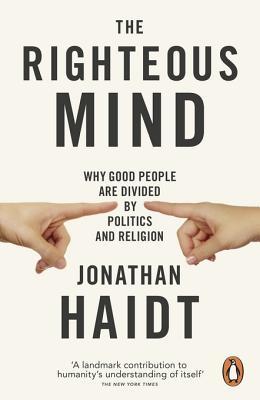More on this book
Community
Kindle Notes & Highlights
For you, as for most people on the planet, morality is broad. Some actions are wrong even though they don’t hurt anyone.
I studied philosophy in college, hoping to figure out the meaning of life. After watching too many Woody Allen movies, I had the mistaken impression that philosophy would be of some help.
“Is moral thinking any different from other kinds of thinking?”
some ways one might compare moral thinking to other kinds of thinking
moral psychology was a part of developmental psychology.
nativist.
empiricist.
rationalism,
Jean Piaget,
cognitive stage)
Kids figure it out for themselves, but only when their minds are ready and they are given the right kinds of experiences.
self-constructed
This is the essence of psychological rationalism: We grow into our rationality as caterpillars grow into butterflies.
Lawrence Kohlberg,
moral dilemmas
should a man named Heinz break into a drugstore to steal a drug
six-stage progression
“pre-conventional”
“conventional”
petty legalism
“post-conventional” stages,
“moral philosophers” trying to work out coherent ethical systems for themselves.
Egalitarian relationships (such as with peers) invite role taking, but hierarchical relationships (such as with teachers and parents) do not.
Piaget and Kohlberg both thought that parents and other authorities were obstacles to moral development.
don’t force them to obey God or their teachers or you.
That will only freeze them at the conventional level.
framework that predefined morality as justice while denigrating authority, hierarchy, and tradition,
Elliot Turiel
social conventions,
Children recognize that rules that prevent harm are moral rules,
They seem to grasp early on that rules that prevent harm are special, important, unalterable, and universal.
the bedrock of the absolute moral truth that harm is wrong.
morality is about treating individuals well. It’s about harm and fairness (not loyalty, respect, duty, piety, patriotism, or tradition).
Alan Fiske,
ethnographies
the United States and Western Europe as extraordinary historical exceptions—new societies that had found a way to strip down and thin out the thick, all-encompassing moral orders
Hebrew Bible,
taken up with rules about food, menstruation, sex, skin, and the handling of corpses.
Richard Shweder,
Orissa,
small set of questions about how to order society, the most important being how to balance the needs of individuals and groups.
sociocentric
individualistic
(European nations with strong social safety nets are not sociocentric on this definition. They just do a very good job of protecting individuals
these actions were wrong, universally wrong, and unalterably wrong.
Morality was much broader and thicker in Orissa;
When you put individuals first, before society, then any rule or social practice that limits personal freedom can be questioned. If it doesn’t protect somebody from harm, then it can’t be morally justified. It’s just a social convention.
“harmless taboo violations,”
disgust and disrespect.
a girl pushes a boy off a swing (that’s a clear moral violation) and a boy refuses to wear a school uniform (that’s a conventional violation).


